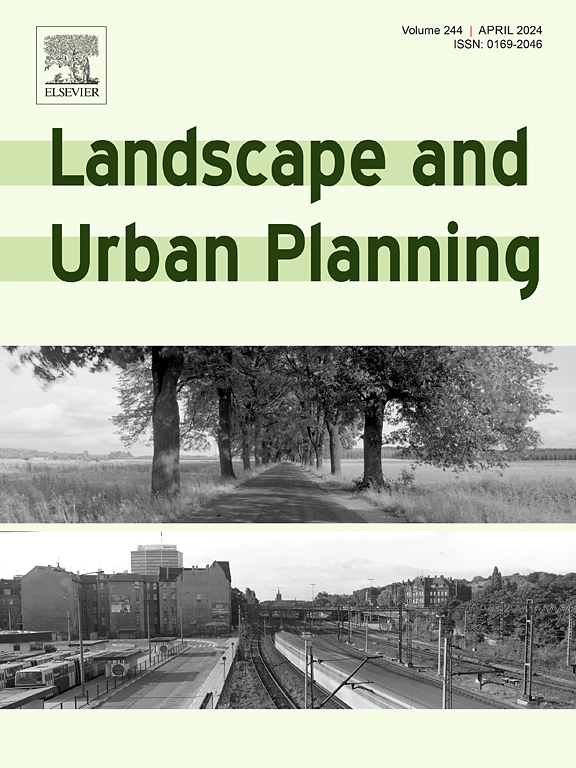Impacts of forest clear-cutting on recreational activity: Evidence from crowdsourced mobility data
IF 7.9
1区 环境科学与生态学
Q1 ECOLOGY
引用次数: 0
Abstract
Intensive forest management practices including stand-replacing clear-cuts continue to dominate silviculture globally, yet their impacts on recreational ecosystem services are largely unknown. While landscape preference studies suggest intact forests are favoured over forest clear-cuts for aesthetics, it’s unclear if this influences recreational behaviour. Analysing a sample of 2.7 M recreational activities (0.4 M pedestrian, 2.1 M cycling and 0.1 M skiing) over Norway during 2017 along forest trails that were within 1 km of a subsequent clear-cut in 2018, we quantified the impact on activity changes observed in 2019 using a before-after-control-impact (BACI) study design. Across the 10,781 clear-cuts included in our analysis, we found a negative effect on pedestrian activity (−3.7 ± 4 %; ± 95 % CI), a neutral effect on cycling activity (0.5 ± 3.5 %) and a positive, but highly variable effect on skiing activity (13.4 ± 15.4 %). Therefore, our results suggest that the research on people’s stated preference for intact and natural forests is corroborated by behavioural avoidance of clear-cut forests during pedestrian activity, but not necessarily cycling or skiing. After taking all activities into account and extrapolating to the total population of recreationists in Norway, we found that clear-cuts displace 1.5 M ± 0.8 M activities annually, with more pronounced impacts near urban areas. We conducted a cross-sectional regression analysis and found effect sizes which corroborate our BACI results, indicating that clear-cuts not only displace, but reduce total recreational activity. Although the reduced activity due to clearcuts is small (0.15 %) relative to the circa 1 billion recreational activities reported in Norway annually, it may be consequential for forestry policy recommendations depending on how one values recreational ecosystem services. In the context of ecosystem service accounting, we argue that the value from recreation services lost due to clear-cutting exceeds the value of timber provisioning services gained, particularly in peri-urban forests.
森林砍伐对娱乐活动的影响:来自众包移动数据的证据
集约化的森林管理实践,包括取代砍伐殆尽的林分,继续在全球范围内主导着造林,但它们对娱乐生态系统服务的影响在很大程度上是未知的。虽然景观偏好研究表明,在美学方面,完整的森林比被砍伐的森林更受青睐,但尚不清楚这是否会影响娱乐行为。我们分析了2017年在挪威境内沿森林小径进行的2.7 M娱乐活动(0.4 M步行,2.1 M骑自行车和0.1 M滑雪)的样本,这些小径与2018年随后的砍伐距离在1公里以内,我们使用前后控制-影响(BACI)研究设计量化了对2019年观察到的活动变化的影响。在我们分析的10,781个砍伐区中,我们发现对行人活动的负面影响(- 3.7±4%;±95% CI),对骑行活动的中性影响(0.5±3.5%),对滑雪活动的积极影响(13.4±15.4%),但变化很大。因此,我们的研究结果表明,人们对完整和天然森林的偏好的研究得到了步行活动时行为避免的证实,但不一定是骑自行车或滑雪时。在考虑了所有活动并将其外推到挪威休闲主义者的总人口之后,我们发现,砍伐殆尽的森林每年取代了1.5 M±0.8 M的活动,对城市地区的影响更为明显。我们进行了横断面回归分析,发现了与BACI结果相一致的效应值,表明砍伐森林不仅取代了人们的位置,而且减少了总的娱乐活动。尽管与挪威每年报告的大约10亿次娱乐活动相比,砍伐森林导致的活动减少很小(0.15%),但这可能对林业政策建议产生重大影响,这取决于人们如何评价娱乐生态系统服务。在生态系统服务核算的背景下,我们认为,由于完全砍伐而失去的娱乐服务的价值超过了木材供应服务的价值,特别是在城郊森林中。
本文章由计算机程序翻译,如有差异,请以英文原文为准。
求助全文
约1分钟内获得全文
求助全文
来源期刊

Landscape and Urban Planning
环境科学-生态学
CiteScore
15.20
自引率
6.60%
发文量
232
审稿时长
6 months
期刊介绍:
Landscape and Urban Planning is an international journal that aims to enhance our understanding of landscapes and promote sustainable solutions for landscape change. The journal focuses on landscapes as complex social-ecological systems that encompass various spatial and temporal dimensions. These landscapes possess aesthetic, natural, and cultural qualities that are valued by individuals in different ways, leading to actions that alter the landscape. With increasing urbanization and the need for ecological and cultural sensitivity at various scales, a multidisciplinary approach is necessary to comprehend and align social and ecological values for landscape sustainability. The journal believes that combining landscape science with planning and design can yield positive outcomes for both people and nature.
 求助内容:
求助内容: 应助结果提醒方式:
应助结果提醒方式:


